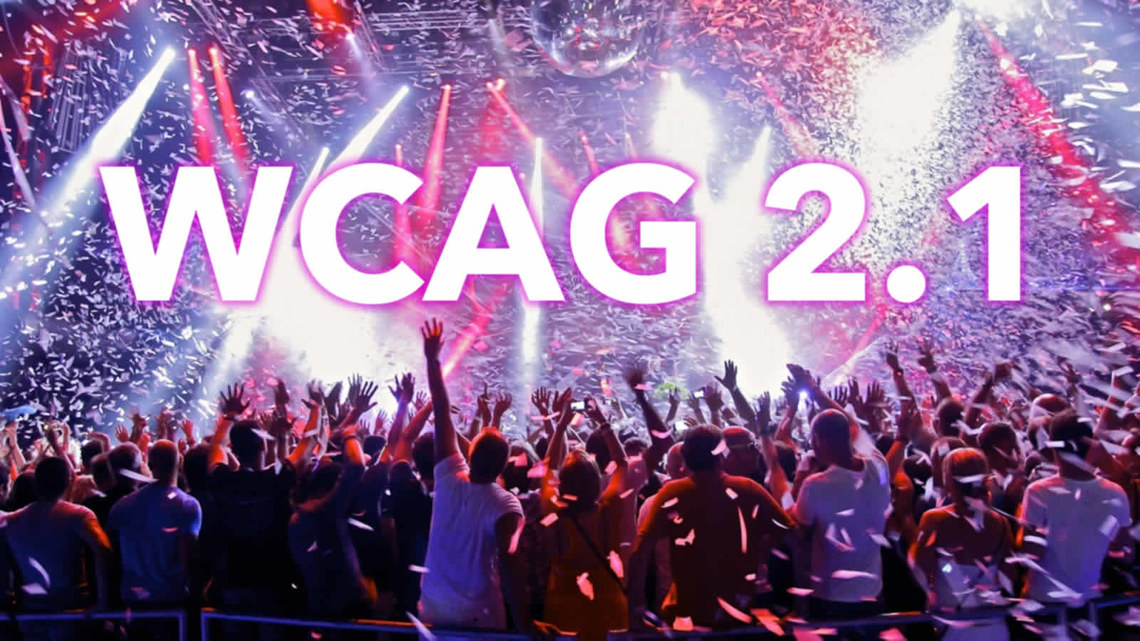
WCAG 2.1 Overview
Recently, the World Wide Web Consortium (W3C) updated the Web Content Accessibility Guideline (WCAG) and added 17 new criteria to what was established in WCAG 2.0. The WCAG is recognized internationally as a guideline for ensuring digital content is accessible to people with disabilities. This latest version addresses new technologies (mobile in particular) and other digital barriers that have become better understood since version 2.0 was published in 2008.
Web accessibility has become a major issue we've passed the legal tipping point in case law, that now confirms with less question, that commercial websites are "places of public accommodation" and therefore subject to the American Disabilies Act. Government institutions and institutions that take federal dollars (schools) are subject to Section 508 of the American Disabilities Act. In both cases, the WCAG serves as the de facto standard for guaging accessibility.
What is new in WCAG 2.1?
WCAG 2.1 adds 17 new criteria to 2.0. Of these 5 are A, 7 are AA, and 5 are AAA, These updates overall address three categories of issues: device technlogy (mobile), vision impairments, cognative impairments.
- Orientation AA - Enable content to be consumed regardless of orientation of device (landscape vs portrait).
- Indentify Input Purpose AA - Input fields that identify meaning ... aka autocomplete.
- Identifying Purpose AAA - Enabling sofware that can identify content meaning and replace with icons for example.
- Reflow AA - Enable content to be viewed without horizontal scrolling (max width of 320 pixels).
- Non-Text Contrast AA - Ensure that visual elements that indicates states or boundaries provide adequate contrast (buttons).
- Text Spacing AA - Enable spacing between lines and paragraphs to scale as users increase font sizes. Otherwise, text can overlap or get cut off.
- Content on Hover or Focus AA - Content and modal pop-ups must be easily accessed, controlled and dismissed.
- Character Key Shortcuts A - Short cut controls for keyboard users.
- Timeouts AAA - Inform users of any page/content timeouts.
- Animations From Interactions AAA - Allow users to turnoff any animations triggered by interaction.
- Pointer Gestures A - Allow users that can't use a touchpad to still operate the application with a single gesture tool
- Pointer Cancellation A - Allow users to not accidentally trigger an event
- Label In Name A - Make sure that the label viewed and the element's label in the code are the same, to ensure that voice commands work for example.
- Motion Actuation A - Provide alternate controls for functions based on moving the device itself, such as shaking a mobile phone.
- Target Size AAA - Ensure that the size of any target is large enough for pointer input (44x44 pixels).
- Concurrent Input Machanisms AAA - Allowing a user to use or switch between multiple assistive technlogies.
- Status Messages AA - Enable status messages to be understood by assistive technologies.
What does this mean for businesses, schools, and institutions?
Do I need to audit and remediate my website for WCAG 2.1?
The answer is no, there is no immediate need to rush out and update your website to the new standard. Neither the DOJ nor the courts are going to expect websites to suddenly comply with this version. The DOJ hasn't even officially set WCAG 2.0 as the standard, even though its been the de facto standard for many years.
Avoid Doing Nothing
First assess where your website is in its lifecycle, and if you're anywhere close to redesign time. If you are, find a website development partner with chops in web accessibility (like us) and get going sooner than later.
If your website is relatively new or your not ready to redesign, then you'll need to audit your website and remediate based on what that audit reveals. Here, its important to avoid anything that appears to be quick, cheap, or easy. There are many false claims and weak products out there that will not protect you from legal exposure. The only way to be assured is to follow a thorough 3 step process that starts with Automated software (not free or under $50/mo) to capture the volume of easy to catch issues, followed by Manual Testing, and then Assistive Technology Testing.
If you are in either process, setting the goal to WCAG 2.1 won't add to your cost dramatically, and will set you up for compliance for years to come, so go for it. You'll find that good accessibility equals good usability for all (and good SEO too).